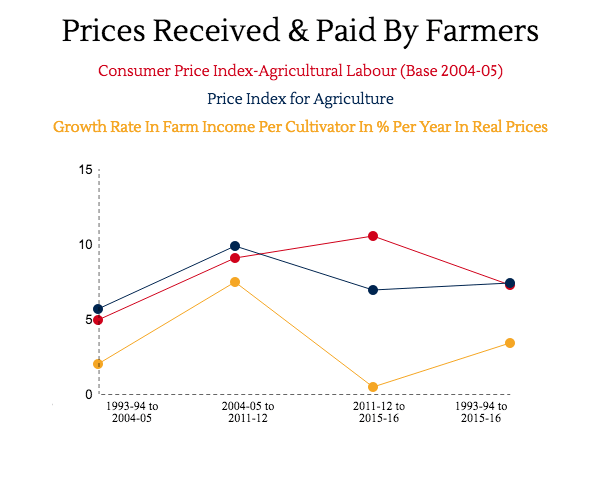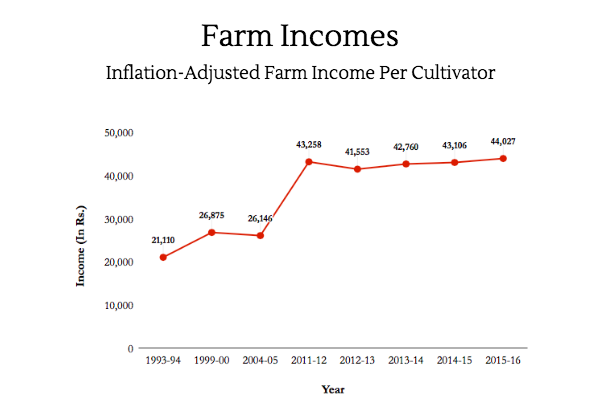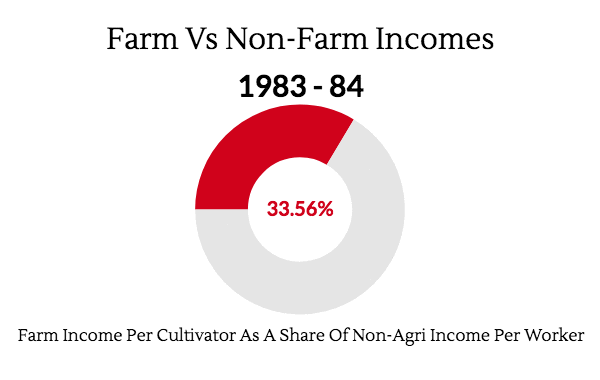In 5 Years To 2015-16, Real Farm Income/Cultivator Up 0.44% Annually
In five years to 2015-16, inflation-adjusted farm income per cultivator grew at only 0.44% a year, according to this March 2017 policy paper by National Institution for Transforming India (NITI) Aayog. Since 1993-94, it has risen 108.5% to Rs 44,027 in 2015-16 in real terms, the paper reveals.
Data for the number of cultivators is available only up to 2011-12. Figures for later years have been estimated by assuming that people will continue to leave agriculture at the same rate as between 2004-05 and 2011-12.
Source: NITI Aayog
Source: NITI Aayog
In 2011-12, 64% of the rural workforce was engaged in agriculture, according to the NITI Aayog’s estimates based on data from Central Statistical Office and National Sample Survey Organisation.
Between 2004-05 and 2011-12, the number of people employed in agriculture in rural areas fell at an annual rate of 2.04% or by 34 million. At this rate, the rural workforce in agriculture is expected to come down to 55% by 2022-23, according to the NITI Aayog’s analysis.
In five years to 2015-16, prices received by farmers for their produce are estimated to have risen by 6.88% even as prices they paid for buying goods and services, as measured by the Consumer Price Index for Agricultural Labour, went up by 10.52%, according to the NITI Aayog paper.
In 29 years to 2011-12, farm income per cultivator has remained stagnant around 32-33% of a non-farm worker’s income, according to NITI Aayog’s analysis.
Farm income per cultivator was 34% of those working in the non-farm sector in 1983-84. This slipped to 33% a decade later and dropped further to 24.5% in 2004-05. It has increased again to around the 1983-84 level at 32% in 2011-12.
Source: NITI Aayog
(Vivek is an analyst with IndiaSpend.)
We welcome feedback. Please write to respond@indiaspend.org. We reserve the right to edit responses for language and grammar.
__________________________________________________________________
“Liked this story? Indiaspend.org is a non-profit, and we depend on readers like you to drive our public-interest journalism efforts. Donate Rs 500; Rs 1,000, Rs 2,000.”





